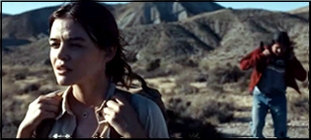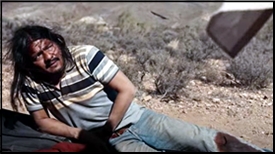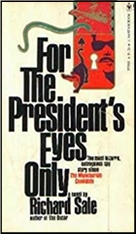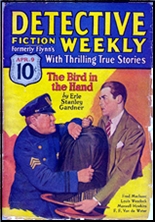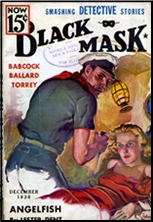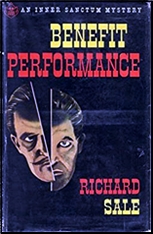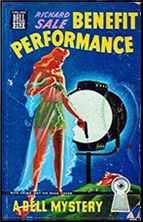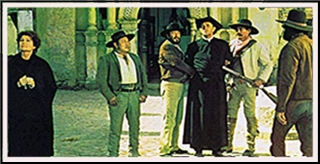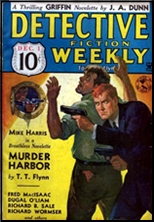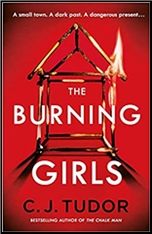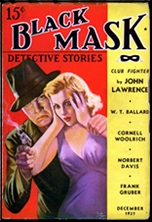REVIEWED BY DAVID VINEYARD:
â— JACK HIGGINS – The Wrath of God. Originally published as by James Graham (Macmillan, UK, hardcover, 1971; Doubleday, US, hardcover, 1971; Dell, US, paperback, 1974).
â— THE WRATH OF GOD. (1972) Robert Mitchum, Ke.n Hurchinson, Victor Buono, Frank Langella, Rita Hayworth. Director: Ralph Nelson.
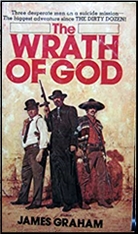
I may shock some here who know what a fan of the British adventure/thriller genre I am, but I stopped reading Jack Higgins after The Eagle Has Landed, his breakthrough bestseller and never went back. I dipped my toes in once in a while, but honestly I just was not interested. To me he was always the least of the major names in the genre, not in the same class as MacLean, Lyall, or Bagley and certainly not Innes, Household, and Canning.
Some of those later books I found nearly unreadable. Major bestselling writer, hugely popular, films, mini-series, but I had moved on. He just did not interest me anymore. I don’t even like Eagle, or the movie based on it.
As a writer, Higgins simply was not a good enough to get me to pull for German commandos trying to assassinate Churchill and their traitorous charismatic IRA helper. I’m just not sophisticated enough to enjoy an entertainment when I’m pulling for the main characters to be shot as soon as possible, not unless the writer is a hell of a lot more skilled than Jack Higgins was.
But noting his recent death I thought I would look at my favorite Higgins novel, because once upon a time I read him faithfully and had high hopes for him.
Higgins, real name Harry Patterson, was a school teacher who decided writing was more fun and paid better and went about it with a vengeance unseen since the heyday of the pulps. He had to manufacture multiple names to keep up with his output, mostly in around sixty thousand to seventy thousand word novels that moved fast, had attractive narrators, and exotic locations.
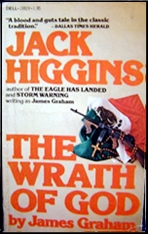
Those are far and away his most entertaining books, Night Judgment on Sinos, Year of the Tiger, A Game of Heroes, East of Desolation (my first), The Run to Morning, and Khufra Run are among the ones I would particularly single out from his his pre-Eagle output. They are not only good books, I’ve reread some of them recently and enjoyed them again.
Along the way he decided that it was more effort to churn out these fast moving short thrillers than to try for something bigger, and one of the names he experimented with in that endeavor was James Graham under which he wrote the fine flying adventure The Last Place God Made and this book, The Wrath of God.
Made has echoes of Nevil Shute, God of Graham Greene. The latter only just edges out the former in my estimation only because I like the fairly cheesy film based on it which I won’t really go into other than to say Robert Mitchum has fun as the phony priest who falls for his own con and Victor Buono gets what may be the only semi heroic role of his career.
I will not kid you it is a good movie, only that it is, for me anyway, a fun one despite the sad figure Rita Hayworth cuts in it as her failing health and mental state were becoming obvious.
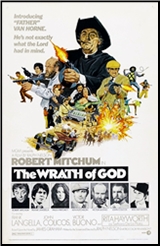
The place is Central America and the time is the 1920’s. The narrator is young ex-IRA gunmen Emmett Keogh for whom the world has become too small and the backwaters of hell seem a good place to lie low. At least they do until he meets Mr. Janos, a fat shady businessman with an ivory headed cane and Father, Oliver Van Horne, a charming American priest. Neither is what they seem. Janos sells illegal arms and Van Horne has a Tommy gun under his cassock and alternates between con artist and bank robber.
All three have run out of places in the world to be.
Which is how the three of them end up under arrest and blackmailed by Colonel Bonilla of the Army into helping topple a mad land owner turned warlord in the small village of Mojada and the surrounding region which is held in the grip of terror by Tomas la Plata, revolutionary, outlaw, madman, and would be dictator.
An army couldn’t pry him out of the region, but maybe a phony priest with a machine gun, an arms dealer, and an IRA gunman/sniper can.
It’s a fairly simple set up that goes back away, the good bad men vs the worse bad men. Arcs of redemption are put into action, tough seasoned hard cases are softened by decent people, love, and the plight of the innocent, and before it is over bloody hell will break out.
But it is written with brio and conviction, the narrator, Keogh, convincingly cynical, tough, and caught up in Oliver Van Horne’s greatest con and his own lingering shreds of idealism.
Writing a book using central casting isn’t always a bad idea.
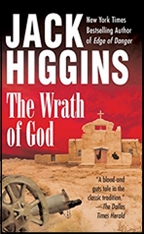
You can guess every turn of the plot well before it happens. There are no surprises here. Our “heroes†will consider stealing the silver hidden in Mojada and double crossing Bonilla, and of course end up doing the right thing while cursing themselves for doing it. Keogh, the youngest, will find love with a local girl.
I’ll go farther and point out that one of the delights of reading Higgins was how much he embraced the more obvious tropes of the genre. He wasn’t one for great invention of plot or character, he instead gave the reader what they wanted in the most straightforward manner possible moving so fast you couldn’t really complain that it was a good sandwich and not a filling meal.
His downfall came when he tried to convince readers it was a multiple course meal and he just didn’t deliver.
Frankly, when I stopped reading him was when he tried to do a bit more and I just didn’t think he really had the chops for it. This and The Last Place God Made are as far as he was really able to stretch himself in more serious terms, and truthfully he only just makes it, but credit where deserved in the end he does pull it off.
Maybe there wasn’t greatness there, but there was something more than the too slick bestselling writer he became. I would highly recommend every book I have mentioned here but The Eagle Has Landed, granting that most of you will probably disagree and may only know Higgins from his later better known works.
